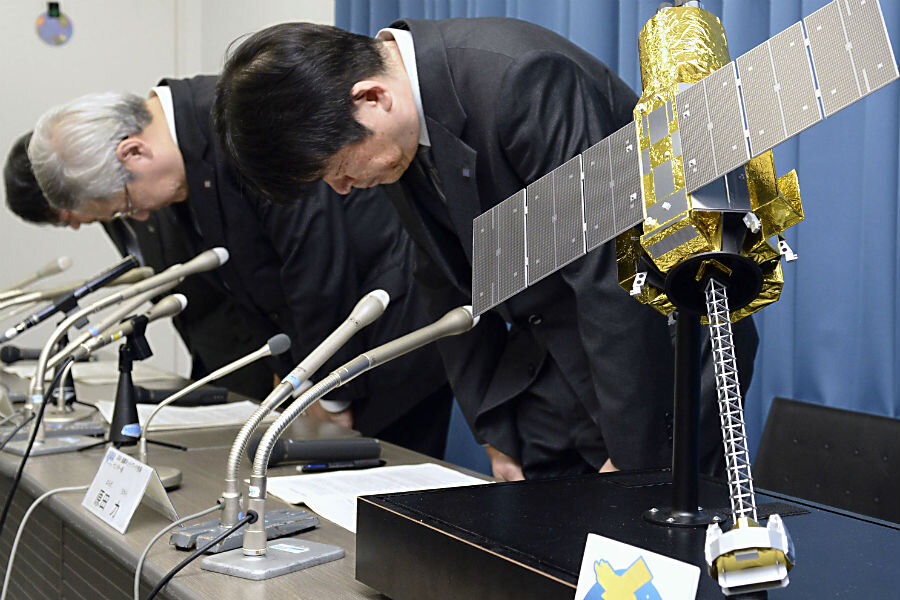Why Japan gave up on fixing lost satellite Hitomi
Efforts to restore Hitomi, the nearly $290 million X-ray astronomy satellite, are no more.
The Japan Aerospace Exploration Agency (JAXA) announced the decision Thursday, saying that the spacecraft is too severely damaged to be revived.
The spacecraft, designed to study X-rays emitted by black holes, dark matter, and galaxy clusters in space, was Japan's latest attempt in space exploration after two other failed attempts. Hitomi – which is Japanese for "pupil," as in part of the eye – operated for a few weeks, but only yielded three days' worth of data.
Misfortune struck on March 26 when JAXA lost contact with the spacecraft, more than a month after it was launched from southern Japan on Feb. 17. Initially the agency was optimistic about restoring the spacecraft's operations, after receiving static signals on three occasions. Scientists originally believed the signals were from the lost satellite, but later concluded that the messages appeared to come from slightly different frequencies.
"JAXA will cease the efforts to restore ASTRO-H and will focus on the investigation of anomaly causes," the agency said in a statement. "We will carefully review all phases from design, manufacturing, verification, and operations to identify the causes that may have led to this anomaly including background factors."
The cause of the damage is still unknown, but JAXA concluded that it might have been triggered by incorrect programming that cased the satellite to accelerate its spinning. That spinning likely caused its solar panels to snap off, preventing the spacecraft from generating power.
"There were human errors," Saku Tsuneta, director of JAXA's Institute of Space and Astronautical Science, told reporters during a press conference, according to the International Business Times. "But a bigger problem lies with our entire system as we were not able to detect those errors."
Japan's decision marks yet another blow for astronomers who had hoped the spacecraft would shed light into the mystery of X-rays and black holes that have long intrigued scientists. Scientists cannot detect the X-rays on Earth because the Earth's atmosphere blocks them.
The mission was a joint effort between JAXA, NASA, and eight other nations, including Canada and the Netherlands.
For now the future of Japan's space exploration is uncertain, but Dan McCammon, an astronomer at the University of Wisconsin, Madison, estimates that it may take between three to five years to devise a replacement that will be used to measure X-ray energy.
Dr. McCammon, who helped design Hitomi's premiere scientific instrument, the X-ray calorimeter that measures the energy of X-ray photons, told the journal Nature that NASA would need $50 million to build a replacement. The European Space Agency is set to launch a similar mission in 2028.
Despite the disappointment, scientists are hopeful that some information may still be gleaned from Hitomi's data. As Nature reported:
About eight days after launch, Hitomi turned its X-ray gaze on the Perseus cluster, about 250 million light years from Earth. By measuring the speed of gas flowing from the cluster, Hitomi can reveal how the mass of galaxy clusters changes over time as stars are born and die – a test of the crucial cosmological parameter known as dark energy.
But beyond that, astronomers are mourning the opportunities lost when contact with Hitomi blinked out.
"It's a scientific tragedy," Richard Mushotzky, an astronomer at the University of Maryland in College Park, told Nature. "We had three days. We'd hoped for ten years."






